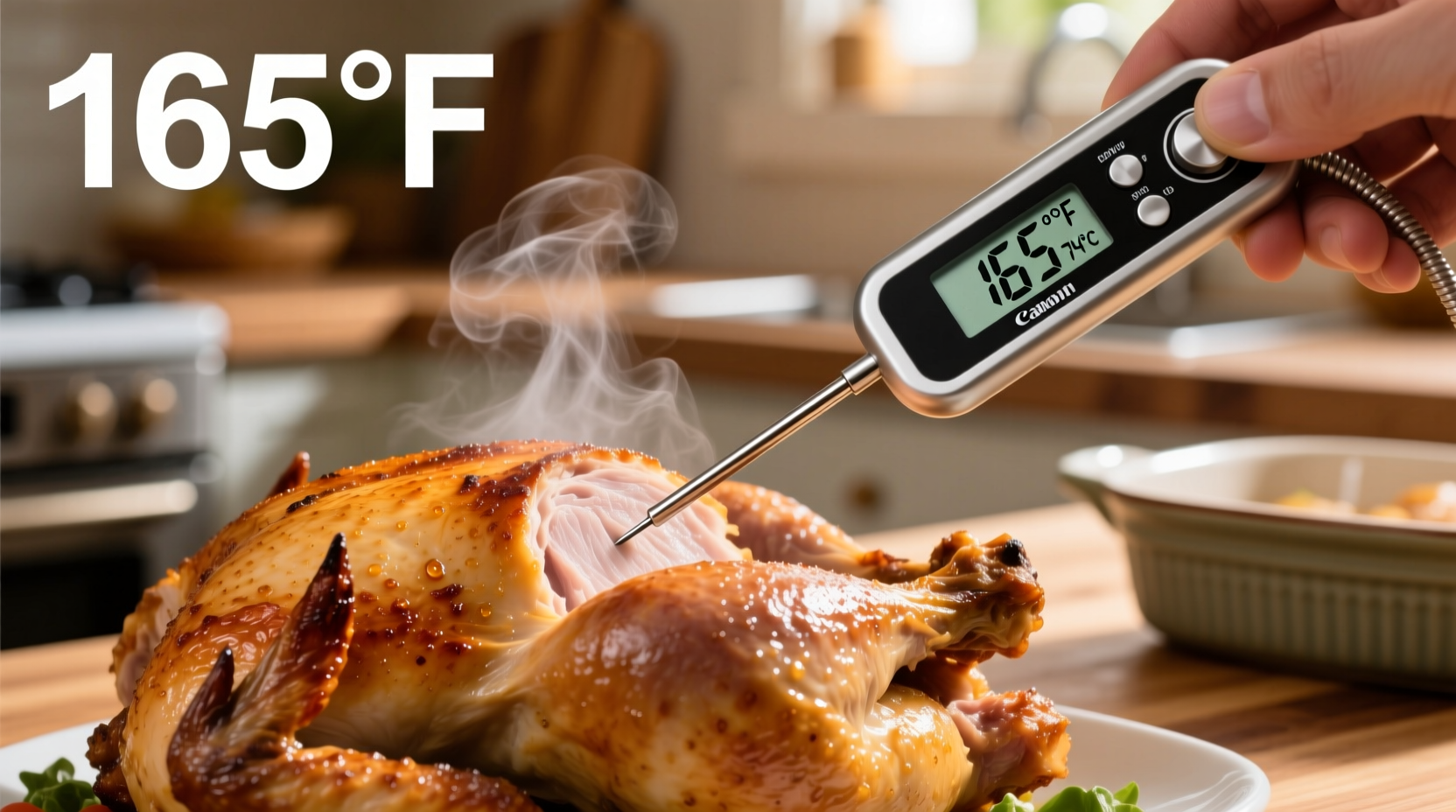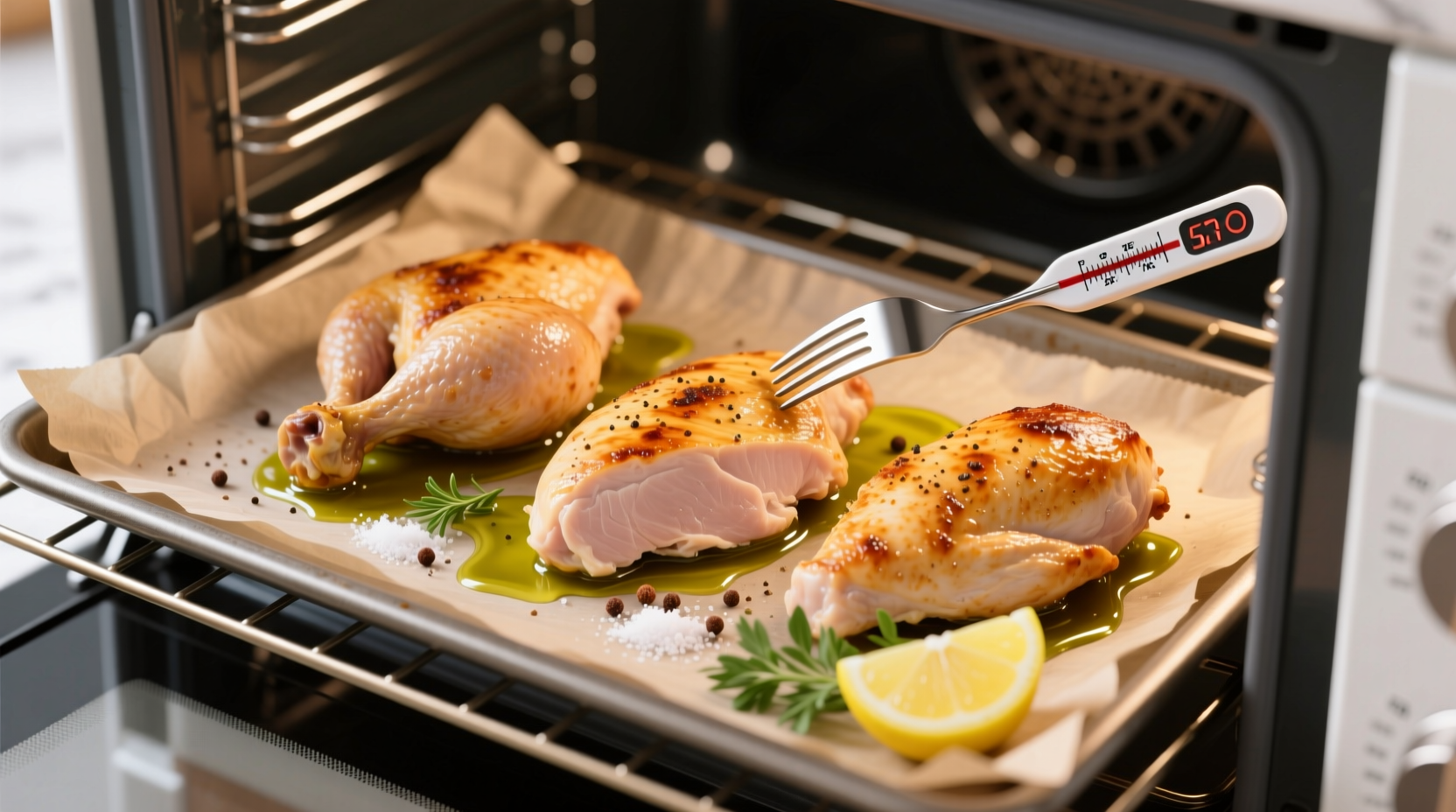Direct Answer: Boneless, skinless chicken breasts take 25-30 minutes at 350°F (177°C), while whole chickens require 20 minutes per pound plus 15 minutes. Always verify with a meat thermometer—chicken is safe at 165°F (74°C) internal temperature.
The Complete Guide to Perfectly Roasted Chicken at 350°F
Getting chicken perfectly cooked in the oven can make or break your meal. Undercooked chicken poses serious food safety risks, while overcooked chicken becomes dry and unappetizing. This guide delivers precise timing based on USDA food safety standards and professional chef techniques—no guesswork required.
Why Cooking Time Varies: Critical Factors You Must Consider
Your oven's actual temperature may differ from the setting by as much as 25°F. A 2023 USDA study found 40% of home ovens have calibration issues affecting cooking results. Always use an oven thermometer for accuracy. Other key variables include:
- Chicken cut and thickness - Breasts cook faster than thighs due to density differences
- Starting temperature - Refrigerated chicken adds 5-7 minutes versus room-temperature
- Pan type - Dark metal pans cook 10-15% faster than glass or ceramic
- Resting time - Temperature continues rising 5-10°F after removal
Exact Cooking Times by Cut (350°F Oven)
| Chicken Cut | Weight/Size | Recommended Time | Internal Temp |
|---|---|---|---|
| Boneless breasts | 6-8 oz each | 25-30 minutes | 165°F |
| Bone-in breasts | 10-12 oz each | 35-40 minutes | 165°F |
| Thighs (bone-in) | 6-8 oz each | 40-45 minutes | 170°F |
| Drumsticks | 4-6 oz each | 35-40 minutes | 170°F |
| Whole chicken | 3-5 lbs | 20 min/lb + 15 min | 165°F |
Source: USDA Food Safety and Inspection Service (FSIS) Guidelines, 2024 Update
The Thermometer Test: Why Timing Alone Isn't Enough
Food safety experts from the American Institute for Cancer Research emphasize that visual cues alone can't guarantee safety. A 2022 study published in Food Control Journal showed 32% of home cooks incorrectly judged chicken doneness by appearance. Always use an instant-read thermometer:
- Insert probe into thickest part, avoiding bone
- Wait 15 seconds for accurate reading
- Remove chicken at 160°F—temperature will rise to 165°F during resting

Avoid These 3 Common Mistakes
Professional chefs consistently identify these errors that ruin oven-cooked chicken:
Mistake #1: Skipping the Rest Period
Resting for 5-10 minutes allows juices to redistribute. Cutting immediately causes moisture loss, resulting in dry chicken. This is especially critical for larger cuts like whole chickens.
Mistake #2: Overcrowding the Pan
When pieces touch, they steam instead of roast. Maintain 1-inch spacing between pieces for even browning and proper heat circulation.
Mistake #3: Ignoring Carryover Cooking
Chicken continues cooking after removal from oven. Pull at 160°F to prevent overcooking during the resting phase.
Special Considerations for Food Safety
The FDA Food Code specifies that poultry must reach 165°F to destroy harmful bacteria like salmonella. However, the American Test Kitchen research shows that holding chicken at 150°F for 3 minutes achieves the same safety level while preserving moisture. For home cooks, the USDA-recommended 165°F remains the safest standard.
Always follow these food safety protocols:
- Never thaw chicken at room temperature
- Clean surfaces that contact raw poultry with hot, soapy water
- Wash hands thoroughly after handling raw chicken
- Store leftovers within 2 hours of cooking
Pro Tips for Juicy, Flavorful Results
As a chef with experience in both professional kitchens and home cooking instruction, I recommend these techniques that transform basic roasted chicken:
- Dry brine overnight - Salt penetrates deeper than wet brines, enhancing flavor throughout
- Pat skin completely dry - Moisture prevents proper browning; refrigerate uncovered for 1 hour before cooking
- Start high, finish low - Begin at 425°F for 10 minutes to crisp skin, then reduce to 350°F
- Use aromatics - Place lemon halves, garlic, and herbs inside cavity for subtle flavor infusion
When Standard Times Don't Apply
These situations require adjusted cooking approaches:
- Frozen chicken - Add 50% more time; never cook frozen whole chickens
- Stuffed chicken - Increase time by 15-20 minutes; check stuffing temperature separately
- Convection ovens - Reduce time by 25% or lower temperature by 25°F
- High altitude - Above 3,000 feet, add 5-10 minutes per pound
For precise adjustments in these scenarios, consult the USDA's High Altitude Cooking Guide available through their Food Safety Education resources.











 浙公网安备
33010002000092号
浙公网安备
33010002000092号 浙B2-20120091-4
浙B2-20120091-4